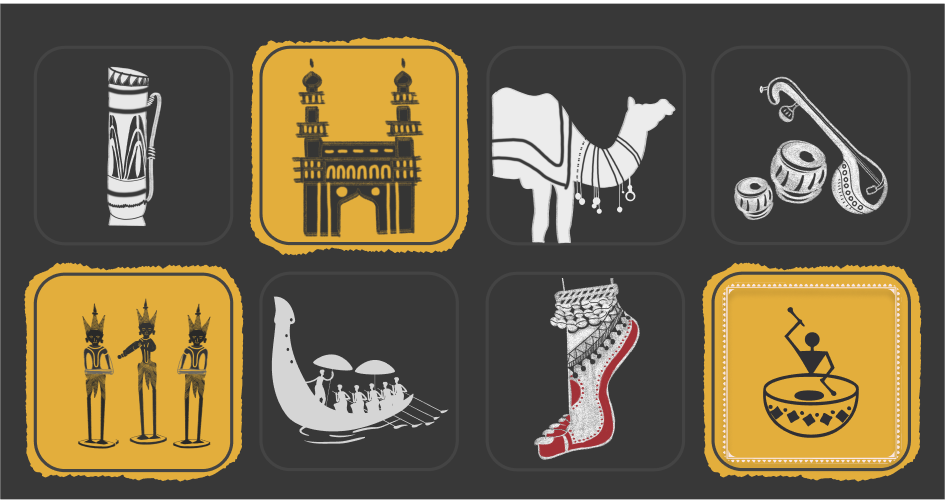Vedanta Ramanuja: The Saint Who United Bhakti and Vedanta
Vedantha Ramanujar, a revered philosopher and theologian of the 11th century, was a pivotal figure in the Sri Vaishnavism tradition. Renowned for his profound teachings on Vishishtadvaita (qualified non-dualism), he harmonized devotion and knowledge, guiding countless seekers towards spiritual enlightenment. His legacy continues to inspire devotees with his emphasis on devotion to Lord Vishnu and compassionate service to humanity.
Swami Vedanta Ramanujan
Birth and Early Life of Ramanuja:
In 1017 A.D.,Ramanuja was born into a Tamil Brahmin own family within the village of Sriperumbudur, located around twenty-five miles west of Madras. His father, Kesava Somayaji, and his mother, Kantimathi, named him Ilaya Perumal in Tamil. Ramanuja lost his father at a young age and subsequentlymarried and moved to Kancheepuram to continue his Vedic studies under Yadavaprakasha, a teacher of Advaita philosophy. However, their differing interpretations of Vedic literature brought about a parting of methods. Ramanuja then committed himself to the Varadaraja Perumal temple in Kanchi, wherein his teachings began to attract substantial interest.Today, this place remains a site of pilgrimage, often adorned with a Ramanujacharya idol to honor his presence.
By the late tenth century, the Visishtadvaita school of philosophy had become firmly established in Southern India. Followers of this tradition were responsible for overseeing major Vaishnavite temples in places like Kancheepuram, Srirangam, Tirupathi, and other significant locations. Yamunacharya, the esteemed Vaishnavite acharya and head of the Ranganathasamy temple in Srirangam, were carefully following Ramanuja's development.
Click here to buy Vendanta Ramanujan Statue
As Yamunacharya grew older, he sought a worthy Person to lead the Mutt at Srirangam. So he already Heared about Ramanuja's reputation, he decided to appoint him. However, by the time Ramanuja arrived at Srirangam, Yamunacharya had passed away, and his body was being taken to the cremation ground. Ramanuja followed the procession to pay his respects. Ramanuja noticed that three of Yamunacharya's fingers remained unfold, and no one could explain why. He then declared that he would fulfill three vows, and as he mentioned each one, the fingers unfolded. The three vows were:
• To write a text establishing Visishtadvaita based on the Brahma Sutras;
• To be named after Parashara, the author of the Vishnu Purana, and Vedavyasa, the author of the Bhagavata;
• To ensure that the legacy of the Lord who composed the Vedas in Tamil would live on forever.
Ramanuja successfully accomplished all these tasks during his lifetime. After the death of Yamuna, As per the Yamuna's wish, Ramanuja formally installed as the head of the Visishtadvaita Math in Srirangam with all the hospitality ceremonies and celebrations.
A Great Heart
Ramanuja traveled to Thirukottiyur to receive initiation from Nambi for the sacred eight-letter Mantra, "Om Namo Narayanaya." After a two-year penance to study Yamunacharya's Vaishnava philosophy, he was instructed by Nambi under the condition that the Mantra would remain a secret. However, filled with compassion for humanity, Ramanuja gathered people of all castes and creeds at the Tirukkottaiyur temple. He climbed the tower and proclaimed the Mantra loudly so everyone could hear it.
Nambi was furious, seeing this act as a betrayal of the Guru's word and warned that it could lead Ramanuja to hell. In response, Ramanuja stated that it would be fortunate for everyone to attain salvation, even if it meant he faced punishment. Moved by Ramanuja's selfless love, Nambi recognized his compassion and embraced him, acknowledging him as the "great one." With this empowerment, Ramanuja succeeded Yamunacharya and continued to spread the teachings of Visishtadvaita.
Championing Visishtadvaita and Inclusivity in Spirituality:
Ramanuja embarked on extensive travels across India to spread the message of devotion. He visited numerous sacred sites, including Kashi, Kashmir, and Badrinath. On his return journey, he stopped at the Tirupathi hills, where he encountered a dispute between Saivites and Vaishnavites. The Saivites claimed the deity in Tirupathi was Shiva, while the Vaishnavites argued that it was Vishnu. To resolve the conflict, Ramanuja suggested leaving the decision to the deity. Both parties placed the emblems of Shiva and Vishnu at the feet of the Lord, locked the temple doors, and stood guard outside. When the temple was reopened the next morning, the image of the Lord was adorned with Vishnu’s emblems, while Shiva’s emblems remained at His feet as they had been placed the previous evening. This settled the dispute, and from that day on, the temple was recognized as a Vaishnavite one.
Visit Us to Browse Our products
Afterward, Ramanuja visited all the prominent Vaishnavite shrines in South India and eventually settled in Srirangam. There, he dedicated himself to teaching the Visishtadvaita philosophy and authoring several works. Large crowds gathered daily to listen to his discourses. He took measures to purify temples, establish proper rituals, and correct social issues within the community. His following included 700 sannyasins (ascetics), 74 dignitaries in special ministerial roles, and thousands of devoted men and women who regarded him as divine. Ramanuja led countless people toward the path of Bhakti (devotion), even extending initiation to individuals from all walks of life, including washermen. Despite being 70 years old, he continued to establish more Mutts, build temples, and guide thousands of people toward spiritual enlightenment.
Spreading Visishtadvaita
During the time of Kulothunga I, the Chola king and a devoted Saivite, he commanded Ramanuja to accept Shiva as the Supreme Lord. In Ramanuja's absence, his disciples Kuresa and Mahapurna went to the king’s court to defend Vishnu's superiority but were met with hostility; the king refused to listen and had them blinded.
The two disciples returned to Srirangam, but Mahapurna, being elderly, succumbed to his injuries on the way. Kuresa made it back alone. Meanwhile, Ramanuja and a few followers journeyed swiftly to the Western Ghats, about forty miles from Mysore. There, despite facing many challenges, he established himself and dedicated several years to spreading the Visishtadvaita philosophy.
The local king, Bhatti Deva of the Hoysala dynasty, had a daughter who was possessed. Ramanuja successfully exorcized the demon, restoring her health. Grateful, the king became Ramanuja’s disciple and converted to Vaishnavism. Ramanuja then founded a temple at Melkote and fostered a strong Vaishnavite community. He also included the Pariahs (now known as Harijans) by granting them limited access to the temple, a privilege that continues today.
Over the next two decades, Ramanuja built more Vishnu temples in and around Mysore, growing his following to thousands. After the death of Kulothunga Chola I, Ramanuja received news and longed to return to Srirangam. However, his new followers at Melkote insisted he stay, so he built a temple there with his own image for worship and eventually returned to Srirangam, where he was warmly welcomed. The new king, a supporter of Vaishnavism, allowed Ramanuja to continue his work without interference.Ramanuja spent another thirty years in service, living to an impressive age of 120. He was a key proponent of the Visishtadvaita philosophy, which teaches that Brahman (the Supreme Being) possesses attributes.
Books :
Ramanuja's Sri Bhashyam is one of his best works in the northern language. It is the book that established the Visishtadvaita philosophy in Vedanta for all time. In addition, he wrote:
Vedanta Sangram: It explains the principles of the Upanishads.
Vedanta Saram, and, Vedanta Deepa: These are brief discourses on the Brahma Sutra.
Gita Bhashyam : This is a translation of the Bhagavad Gita.
Nithya Grandham: Daily rituals and Pooja rituals.
Katyayatra: These are three books. Saranagati Katyam is about the surrender of Prabhati. Sriranga Katyam is a prayer to Lord Ranganatha to make Himself His servant. Vaikuntha Katyam describes a vision of Vaikuntha, the abode of Lord Vishnu.
In conclusion, Ramanuja stands as a pivotal figure in the history of Indian philosophy and spirituality. His profound teachings on Visishtadvaita not only emphasized the importance of devotion to Lord Narayana but also advocated for inclusivity and social reform. By challenging societal norms and extending the benefits of spiritual practice to all, regardless of caste, he fostered a vibrant Vaishnavite community that flourished across Southern India. Ramanuja's legacy endures through his writings, teachings, and the countless followers he inspired, solidifying his position as a beacon of compassion, wisdom, and devotion in the spiritual landscape.


